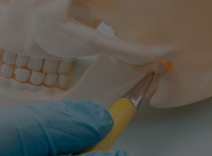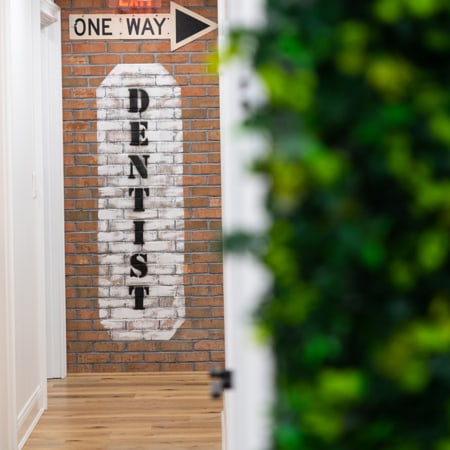Cavities are a common problem and they can affect you at any time. While these tiny openings in the teeth may seem minor, they can lead to significant dental issues if you don’t treat them appropriately. So what does a cavity look like—and what can you do about it?
Cavities look like small visible dark spots on your teeth. They’ll often be accompanied by discoloration and staining in the surrounding area. If you notice these symptoms alongside any discomfort or pain, visit your dentist to discuss treatment.
What are Cavities?
Cavities, clinically known as dental caries or tooth decay, are small areas on the teeth that have been damaged by a bacterial buildup. They develop when a gap is created in the enamel, allowing bacteria to thrive in the more sensitive inner layers of the teeth.
While they may not seem like a big deal, cavities can pose a hazard to your overall health. As cavities progress further into the teeth, they can reach other areas, like the jawbone or surrounding systems. This can lead to worsening symptoms like pain, discomfort, and more.
What Causes Cavities?
Inside your mouth, you have an ecosystem of sorts; there are plenty of microscopic bacteria. These are usually harmless—but this isn’t always the case.
These bacteria thrive on the sugars in most foods and drinks. When they consume sugar, they produce acid as a byproduct. This acid can stick to the teeth, creating that yellow or off-white sticky film called plaque, and slowly starts to damage the enamel over time.
Most of the time, the plaque and acids are removed when you brush and floss your teeth. However, if you occasionally miss a spot or rarely reach certain hard-to-reach areas in the mouth, the acids start to wear through the enamel. They can create a small gap in the tooth itself, and the bacteria start to nest and multiply inside. Then, the process repeats itself, working further and further into the teeth.
Are Cavities Permanent?
The good news is that cavities are treatable, but it’s crucial to address them as soon as possible. Ignoring a cavity can lead to more severe dental issues down the road.
If you leave a cavity untreated, you may develop:
- Toothache and pain
- Infections
- Tooth loss
- Abscesses
By addressing the situation sooner rather than later, you can reduce the risk of further complications. So how do you recognize a cavity?
Can Your Dentist Fix a Cavity?
Your dentist will start by examining your teeth to find out what’s causing your symptoms. If it’s a cavity, they’ll take one of 4 key approaches to treatment:
- Fluoride treatment
- Filling
- Root canal
- Extraction
Fluoride Treatment
In the earliest stages of a cavity, your dentist may be able to restore your enamel through fluoride treatment. It starts with a thorough dental cleaning; they’ll remove any plaque buildup and deep-clean the affected areas.
Then, they’ll carefully apply a dental-grade fluoride treatment. This helps give your enamel new minerals to restore itself with. This only works in the early stages; if there is significant damage to your teeth, this process won’t work.
Fillings
If the cavity has progressed past the surface of the tooth, a filling is the next go-to treatment. This treatment starts with a thorough examination; your dentist will need to determine the extent of the decay.
If they think a filling is appropriate, your dentist will remove the decayed portion of the teeth with precision and care. Then, they’ll clean the cavity, making sure that no bacteria will remain.
Once the cavity is cleaned, your dentist fills the area with a suitable durable material. This restores the structure and function of the tooth—and prevents further decay by sealing the area.
Root Canal
For cavities that have reached the tooth’s pulp or nerve, it becomes a bit more complicated. When bacteria reach the nerves, you’ll notice significant discomfort, and treatment aims to bring you relief while salvaging the parts of the tooth that can be saved.
To do so, a root canal is often advised. This involves removing the infected nerve or pulp, thoroughly cleaning and disinfecting the interior of the tooth, then refilling it with a biocompatible material.
Finally, the tooth is sealed. It’s often covered with a dental crown once the process is complete—this helps restore the overall function and appearance of the tooth. Root canals can often save teeth that otherwise would need to be totally extracted to prevent further problems.
Extraction
In severe cases where the tooth is too damaged to repair, extraction might be the only option. This involves removing the tooth entirely to prevent the spread of infection to nearby teeth and tissues.
Following an extraction, your dentist will discuss options for replacing the missing tooth, such as dental implants, bridges, or dentures, to restore your smile and maintain proper oral function.
Visit Our Dentist for Cavity Care
Don’t wait until a small issue becomes a major problem. Cavities can pose a significant risk, and at Dr. Joe Long Island, we know how to help. Book an appointment with us today—we’re here to help!































